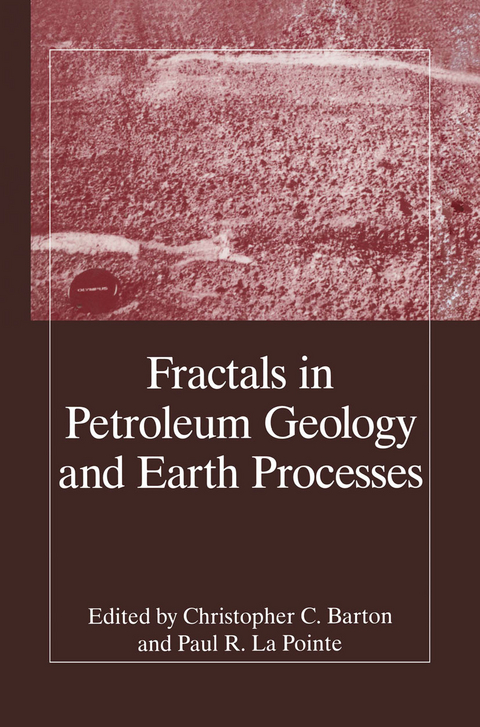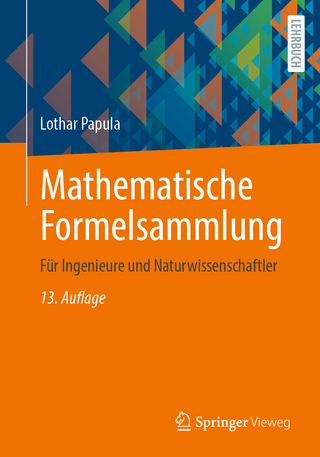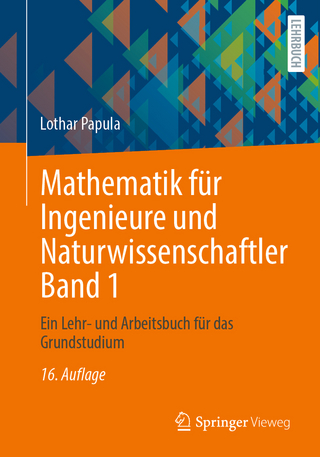
Fractals in Petroleum Geology and Earth Processes
Kluwer Academic/Plenum Publishers (Verlag)
978-0-306-44868-3 (ISBN)
1 Statistics of Natural Resources and the Law of Pareto.- 1.1. Foreword.- 1.2. Introduction.- 1.3. Possible Paretian Triggers of the Economic Distributions Can Be Found in the Physical Sciences.- 1.4. Remarks Concerning the Use of the Lognormal Distribution.- 1.5. Historical Footnote.- 1.6. Relation between the Paretian Distributions of Natural Resources and the Return to Equilibrium in a Random Walk.- 1.7 Conclusion.- Acknowledgment.- References.- 2 The Fractal Size and Spatial Distribution of Hydrocarbon Accumulations: Implications for Resource Assessment and Exploration Strategy.- 2.1. Introduction.- 2.2. Size-Frequency Distributions.- 2.3. Spatial Distribution.- 2.4. Summary and Conclusion.- Acknowledgments.- References.- 3 Estimation of Undiscovered Hydrocarbon Potential through Fractal Geometry.- 3.1. Introduction.- 3.2. Assessment Methodology.- 3.3. Applications to Simulated Data.- 3.4. Application to Actual Data.- 3.5. Conclusions.- References.- 4 Fractals and the Pareto Distribution Applied to Petroleum Accumulation-Size Distributions.- 4.1. Introduction.- 4.2. Fractals.- 4.3. Example.- 4.4. Conclusions.- Appendix: Selected Nomenclature.- References.- 5 Fractal and Multifractal Models and Methods in Stratigraphy.- 5.1. Introduction.- 5.2. The Fractal Description of Stratigraphic Sections.- 5.3. Techniques for the Analysis of Fractal Series.- 5.4. Fractal Models.- 5.5. Examples.- 5.6. Discussion.- Acknowledgments.- References.- 6 On the Scale Independent Shape of Prograding Stratigraphic Units: Applications to Sequence Stratigraphy.- 6.1. Introduction.- 6.2. General Condition for Time-Invariant Clinoform Surface Progradation.- 6.3. Clinoforms of Arbitrarily Complex Shape.- 6.4. Tangential Oblique Clinoforms.- 6.5. Parallel Oblique Clinoforms.- 6.6. Sigmoid Clinoforms.- 6.7. Tangential Erosional Clinoforms.- 6.8. Fractal Clinoforms.- 6.9. Conclusions.- References.- 7 New Models Require New Data: Fractal and Multifractal Measures of Gravel Bedload.- 7.1. Introduction.- 7.2. Characteristics of Gravel-Bed Rivers.- 7.3. Methods of Bedload Sampling.- 7.4. Study Site and Methods.- 7.5. Analysis of Time Series Data.- 7.6. Multifractal Measures of Bedload Transport.- 7.7. Discussion.- Acknowledgments.- References.- 8 Erosional Development of the Ethiopian Plateau of Northeast Africa from a Fractal Analysis of Topography.- 8.1. Introduction.- 8.2. Flexural Rift Flank Uplift as a Tectonic Initiator of Erosion.- 8.3. Fractal Analysis of Ethiopian Rift Flank Topography.- 8.4. Discussion.- 8.5. Conclusion.- Acknowledgments.- References.- 9 Hierarchical Cascades and the Single Fracture: Percolation and Seismic Detection.- 9.1. Introduction.- 9.2. Hydraulic and Mechanical Data.- 9.3. Fractal Flow Patterns.- 9.4. Stratified Continuum Percolation.- 9.5. Conservation of Volume During Deformation.- 9.6. Fluid Row Dependence on Mechanical Displacement.- 9.7. Applications of Stratified Continuum Percolation.- 9.8. Conclusions.- Acknowledgments.- References.- 10 Fractal Patterns in Porous Media Flow: Modeling of Laboratory Experiments.- 10.1. Introduction.- 10.2. Fractal Concepts.- 10.3. Theory.- 10.4. Experimental Techniques.- 10.5. Experiments.- 10.6. Conclusions.- Acknowledgments.- References.- 11 Diffusion-Limited Aggregation in the Earth Sciences.- 11.1. Introduction.- 11.2. The DLA Model.- 11.3. DLA and the Laplace Equation.- 11.4. Applications in the Earth Sciences.- 11.5. Significance to Petroleum Geology and Hydrology.- 11.6. Discussion.- Acknowledgments.- References.- 12 Creating Reservoir Simulations with Fractal Characteristics.- 12.1. Introduction.- 12.2. Fractal Reservoir Characterization.- 12.3. Future Directions.- References.- 13 Vertical versus Horizontal Well Log Variability and Application to Fractal Reservoir Modeling.- 13.1. Introduction.- 13.2. Fractal Distributions.- 13.3. Field Data Analysis.- 13.4. Fractal Generation Techniques.- 13.5. Conditioning.- 13.6. Simulations.- 13.7. Conclusions.- Acknowledgments.- References.- 14 Fractals and Exploration Geophysics: Seismic Deconvolution and Geophysical Inverse Problems.- 14.1. Introduction.- 14.2. Scaling Noises.- 14.3. Results from Well Logs.- 14.4. Autocovariance of Scaling Noises.- 14.5. Deconvolution in Reflection Seismology.- 14.6. Geophysical Inversion.- 14.7. Conclusions.- References.
| Zusatzinfo | XXIII, 317 p. |
|---|---|
| Verlagsort | New York |
| Sprache | englisch |
| Maße | 155 x 235 mm |
| Themenwelt | Mathematik / Informatik ► Mathematik ► Angewandte Mathematik |
| Naturwissenschaften ► Geowissenschaften ► Geologie | |
| Naturwissenschaften ► Physik / Astronomie ► Allgemeines / Lexika | |
| Technik | |
| ISBN-10 | 0-306-44868-8 / 0306448688 |
| ISBN-13 | 978-0-306-44868-3 / 9780306448683 |
| Zustand | Neuware |
| Informationen gemäß Produktsicherheitsverordnung (GPSR) | |
| Haben Sie eine Frage zum Produkt? |
aus dem Bereich


